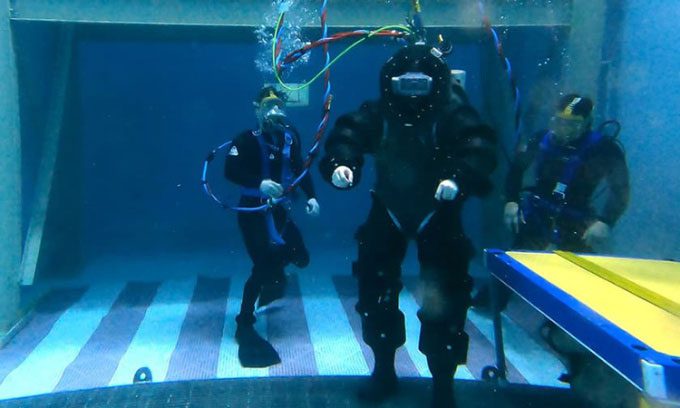The U.S. Navy Completes Underwater Testing for New Deep Diving Suit Named Deep Sea Exploration No-Decompression (DSEND).
The U.S. Navy’s DSEND suit can withstand pressures over 18 atm at depths of 183 meters, Interesting Engineering reported on April 28.

The DSEND diving suit is designed to protect the wearer from water pressure at great depths. (Photo: U.S. Navy).
“DSEND truly changes the game as the suit provides an independent environment, maintaining stable internal pressure as the wearer descends deeper while external pressure increases. The suit enhances diver safety, allowing them to extend their operational range and eliminate prolonged decompression times,” said Dr. Sandra Chapman, an expert at the Soldier Performance Division of the Office of Naval Research (ONR).
DSEND features a closed-loop life support system that envelops the diver in a stable “pressure cocoon” throughout their dive. This allows divers to work at great depths for extended periods and ascend quickly without undergoing decompression (the process where divers must make one or more stops while ascending to allow their bodies to safely release nitrogen or other gases like helium).
“Since DSEND maintains consistent pressure, divers do not experience negative physiological effects associated with deep diving such as decompression sickness, exposure to cold, and humidity. Divers can work for long periods underwater and then quickly return to the surface,” explained Paul McMurtrie, diving program manager at the Naval Sea Systems Command (NAVSEA).
Despite being constructed from tough and durable materials, DSEND remains relatively lightweight, enabling the wearer to swim or walk easily on the ocean floor. The suit also offers additional benefits such as easy donning and doffing and can be adjusted to fit the diver’s size. Furthermore, DSEND helps reduce diver fatigue by integrating joints, clamps, and gloves made from new lightweight, durable materials that mimic the natural movement of human joints.
“DSEND will allow divers to undertake more challenging tasks by going deeper, working faster, and operating longer. They do all this while being protected by a sensor-equipped armor. It feels like we are developing the smart armor of the future that you see in movies,” shared Tom Hansen, research engineer at the Naval Undersea Warfare Center (NUWC).


















































